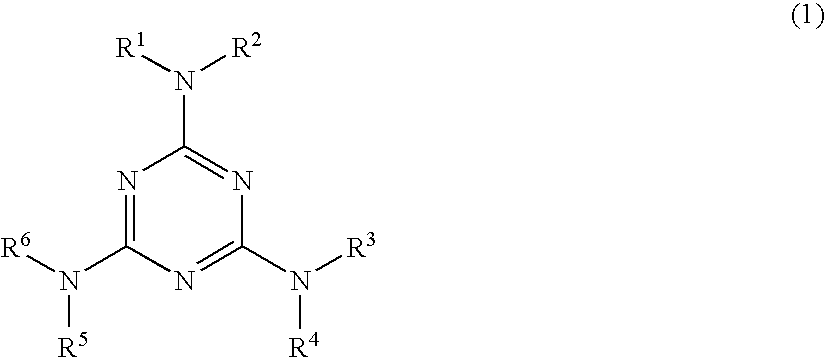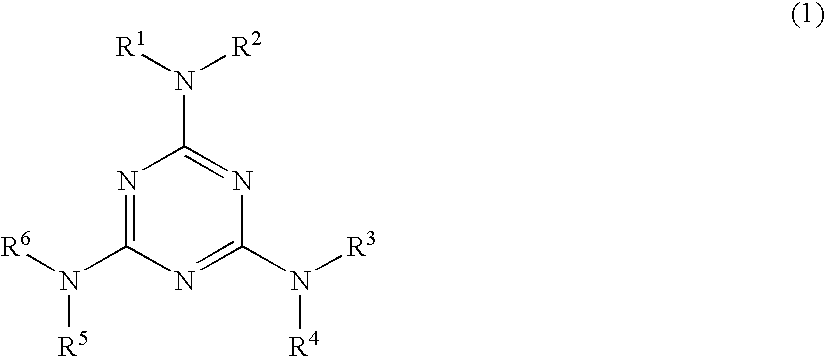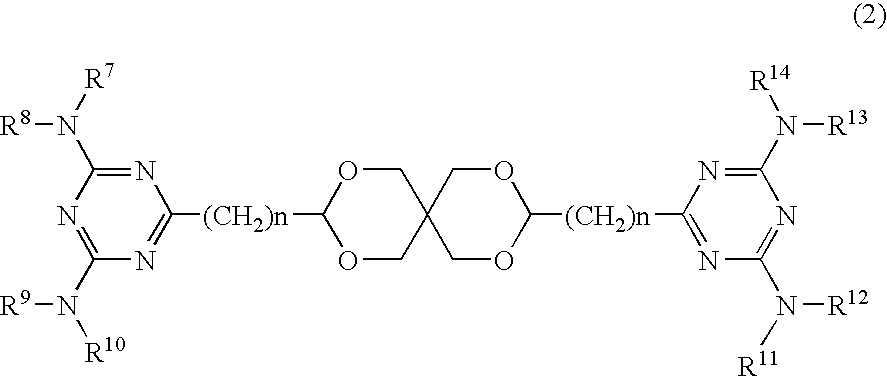Red colored composition and color filter using the same
- Summary
- Abstract
- Description
- Claims
- Application Information
AI Technical Summary
Benefits of technology
Problems solved by technology
Method used
Image
Examples
manufacturing example 1
[0136]100 parts (based on weight, the same hereinafter) of a diketopyrrolopyrrol-based red pigment PR254 (Ciba Speciality Chemicals Co., Ltd. “IRGAFOR RED B-CF”), 10 parts of a coloring material derivative (D-1), 1000 parts of pulverized sodium chloride, and 120 parts of diethylene glycol were put into a 1 gallon stainless steel kneader (Inoue Seisakusho Co., Ltd.) and kneaded for 10 hours at a temperature of 60° C.
[0137]Then, the resultant mixture was introduced into 2000 parts of hot water and stirred for about one hour by means of a high-speed mixer while heating it at a temperature of about 80° C. to obtain a slurry. This slurry was then repeatedly subjected to filtration and water washing to remove sodium chloride and solvent, and was dried for 24 hours at a temperature of 80° C. to obtain a finely divided pigment (R-1). The primary particle diameter of the pigment thus obtained is 25 nm.
manufacturing example 2
[0138]100 parts (based on weight, the same hereinafter) of a anthraquinone-based red pigment PR177 (Ciba Speciality Chemicals Co., Ltd. “CROMOPHTAL RED A2B”), 8 parts of a coloring material derivative (D-2), 700 parts of pulverized sodium chloride, and 180 parts of diethylene glycol were put into a 1 gallon stainless steel kneader (Inoue Seisakusho Co., Ltd.) and kneaded for 4 hours at a temperature of 70° C.
[0139]Then, the resultant mixture was introduced into 4000 parts of hot water and stirred for about one hour by means of a high-speed mixer while heating it at a temperature of about 80° C. to obtain a slurry. This slurry was then repeatedly subjected to filtration and water washing to remove sodium chloride and solvent, and was dried for 24 hours at a temperature of 80° C. to obtain a finely divided pigment (R-2). The primary particle diameter of the pigment thus obtained is 30 nm.
c) Preparation of a Solution of Acrylic Resin
[0140]370 parts of cyclohexanone was put into a react...
synthesis example 1
Melamine Compound (PM-1)
[0146]596.2 g of the solution substituted melamine resin A / cyclohexanone solution containing 22% by weight of non-volatile content, prepared as described above, and 6.3 g of butane tetracarboxylate (Trade name: Liquacid BT-100, manufactured by Sinnihonrika Co., Ltd.) were introduced into 5-necked reaction vessel, and allowed a reaction to take place for 24 hours at a temperature of 60° C. to obtain a product. Incidentally, it was confirmed that there is no absorption of acid anhydride group near 1780 cm−1 in the product by infrared spectroscopic analysis.
[0147]After that, the product was diluted by cyclohexanone so that the non-volatile content of the product was 20% by weight to obtain a melamine compound solution (PM-1). Weight average molecular weight of the melamine compound (PM-1) was 6.700.
PUM
 Login to View More
Login to View More Abstract
Description
Claims
Application Information
 Login to View More
Login to View More - Generate Ideas
- Intellectual Property
- Life Sciences
- Materials
- Tech Scout
- Unparalleled Data Quality
- Higher Quality Content
- 60% Fewer Hallucinations
Browse by: Latest US Patents, China's latest patents, Technical Efficacy Thesaurus, Application Domain, Technology Topic, Popular Technical Reports.
© 2025 PatSnap. All rights reserved.Legal|Privacy policy|Modern Slavery Act Transparency Statement|Sitemap|About US| Contact US: help@patsnap.com



